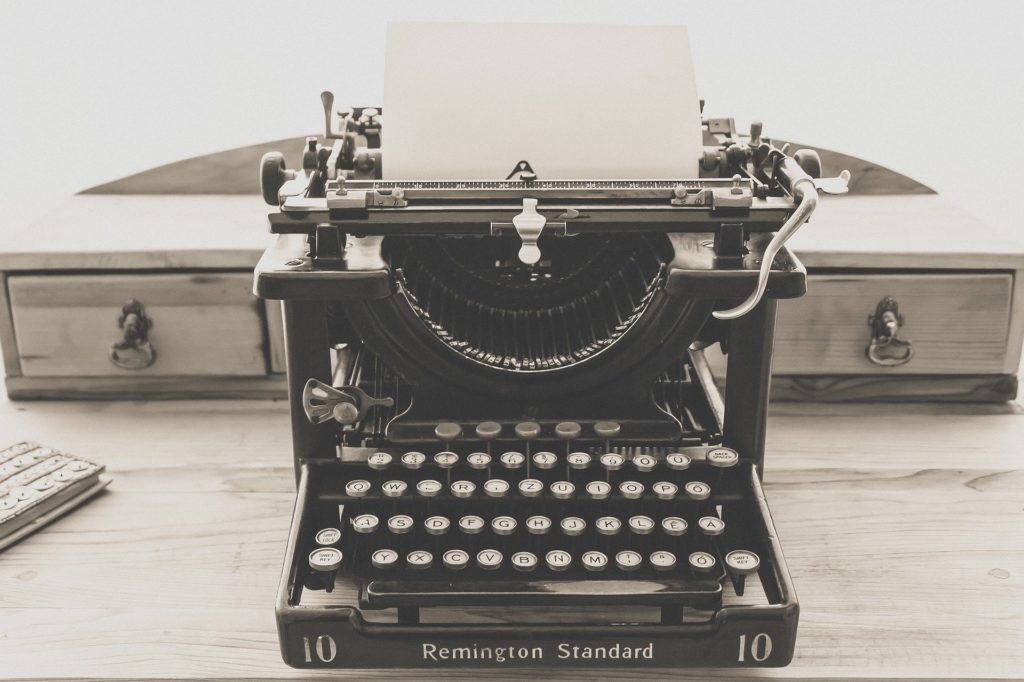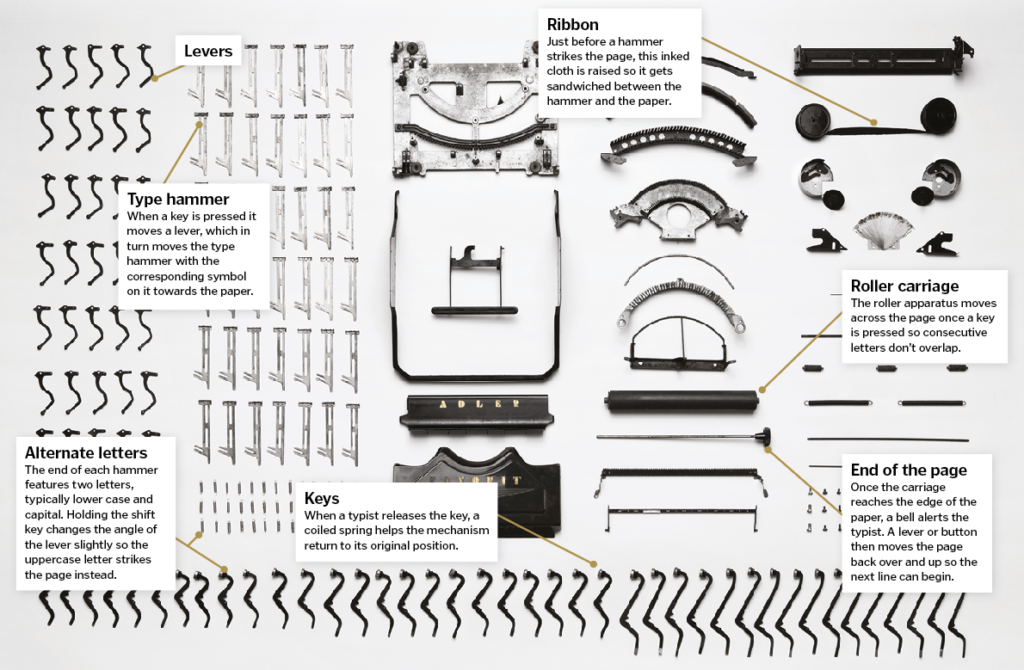Origin Stories: Typewriters
by Scott Dutfield · 29/11/2019

The origins of the mechanical writing machines that influenced modern keyboard designs
For most of the 20th century, almost every house, office and school had a typewriter. This mechanical device allowed people to write rapidly with neat, uniform text .
Each key on a typewriter is connected via a lever to a type hammer, which is a metal bar with the key’s corresponding letter or number embossed on the end of it. When a key is pressed, the lever swings the hammer towards the paper. A thin ribbon coated in ink is raised in front of the page, so that as the hammer strikes, it presses the ribbon on to the paper behind it, leaving an ink impression of the symbol.
The keyboard mechanism works in tandem with the carriage that holds the paper, moving along by the length of a key each time you type so the letters don’t overlap. In some models, nearing the edge of the page would trigger a bell to alert the typist. They would have to reset the carriage to start the next line of text by operating a lever on the side of the machine.
The first typewriters were powered purely by a typist’s fingers, but some later models incorporated electronic motors, so keys only required a light touch. Some writers today still prefer the use of typewriters over computers, as their simplicity minimises distractions
Typewriter teardown
This article was originally published in How It Works issue 98, written by Jack Griffiths
For more science and technology articles, pick up the latest copy of How It Works from all good retailers or from our website now. If you have a tablet or smartphone, you can also download the digital version onto your iOS or Android device. To make sure you never miss an issue of How It Works magazine, subscribe today!






